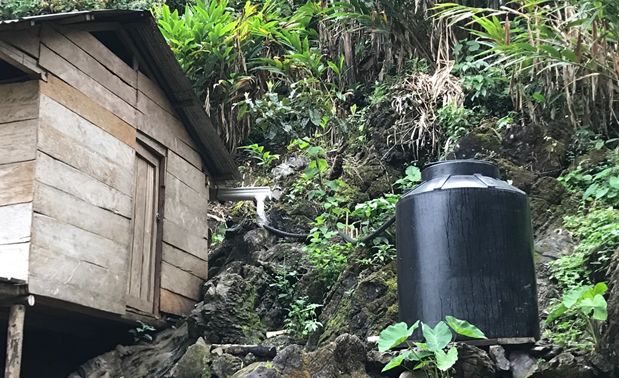ESF Grand Challenges Scholars Program scholar, Elliott Carlson, presents their talent competency on project experience in Marichaj, Guatemala. They explain how a research perspective helps advance engineering solutions to pressing problems affecting sustainability. Project partners include non-profit organization Engineers Without Borders (EWB) and research supervisor, Swiatoslav Kaczmar PE. The Grand Challenge addressed in this competency is Provide Access to Clean Water. The project report is available here.
The EWB student chapter at ESF was tasked with designing a water distribution system for a rural community in the highlands of Guatemala. Due to both the unique physical and atmospheric conditions of the area, the community experienced multiple months of no rain, commonly referred to as the dry season. During this period of the year, the community was required to walk roughly 5 kilometers in order to reach their water source. During the wet season, the community used rainwater catchment systems, installed on each dwelling, to collect water for cooking, cleaning, and drinking (Figure 1). Our team worked closely with community members and non-profit organizations in order to determine the best solution to the problem. Our goal was to provide water to the community during the 3-4 months of the dry season.
Figure 1. Example of rainwater catchment system installed on a home in the Marichaj community
At the start of the project, a team of five students and one mentor traveled to meet the community members and collect much needed information for the design. This included collecting GPS data points, conducting community surveys, and getting a general idea of problem. During our trip, the community showed us a stream that they were hoping to use as the source of water. This stream was fed by a spring higher up in the mountains and would be ideal starting point for the water pipeline. The group hiked the route of the proposed pipeline: down the stream, across a valley, and back up to the community (Figure 2). Any engineering design takes into account all possible alternatives. Therefore, the team developed plans to investigate three alternatives: the spring, groundwater, and expansion of the current rainwater system.
Figure 2. Elliott Carlson (bottom right), EWB team, and community members at the source of the spring
Upon returning from the assessment trip, the student team broke up into three groups to explore the three alternatives. My group was tasked with expanding the rainwater catchment system. This method of water collection was familiar to the community members. This method would require an increase in catchment surface area, installation of water storage, and the development of a disinfection method. In order to provide during the dry season, roughly 2 million liters of water would need to be collected and stored during the wet season. This number was calculated using the community size of 500 people, the average dry season length of 100 days, and the United Nations per capita water demand of 30 liters. Additionally, a factor of safety of 30 percent was added to account for variability and community population increase.
The catchment area under consideration that would provide for the calculated demand were the roofs of the community’s school and church. The school’s roof was measured to be 2500 square feet and the church 1200 square feet. This would provide a total area of 3700 square feet of additional rainwater catchment surface area. Using both the volume required and the available square feet, it was determine that 19 feet of rainfall would need to fall during the wet season in order to provide for the dry season. Unfortunately, the average annual rainfall was found to be roughly 7.5 feet using information gathered from TRMM rainfall data. With this being the case, the rainfall catchment area would need to be larger than what was available in the community. The rainwater catchment and storage alternative did not seem to be the best option. However, it was not eliminated due to the potential for it to be paired with another alternative. The rainwater catchment system did indeed meet the design goal of providing the community with additional water. However, the rainwater catchment design alone would not suffice. This design could be paired with a piping system that distributed water from a nearby spring. Alternatively, the rainwater catchment system could be paired with a system that pumps from a nearby groundwater source. An investigation into nearby springs and groundwater sources would need to be further developed in order to determine the best alternative or combination of alternatives.



















